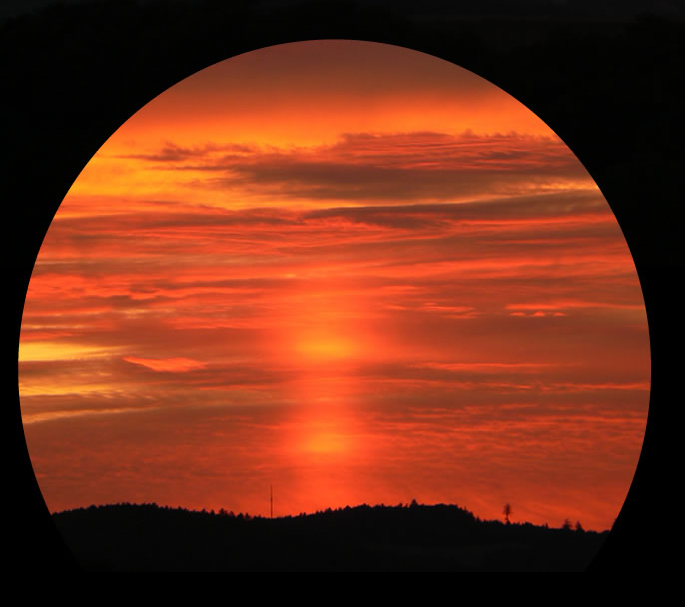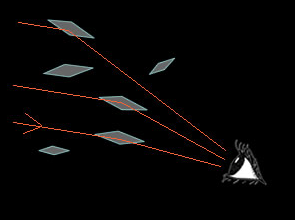Pillar
Pillar: A Vertical Spectacle in the Skies
When we gaze up at the sky, we are often captivated by the beauty and wonder of atmospheric phenomena. One such spectacle that frequently graces our vision is the sun pillar. Unlike other halos, sun pillars are formed by plate-like ice crystals and do not require perfect alignment or symmetry. In fact, the more irregular and wobbly the crystals, the better the pillar becomes. This article will delve into the intricacies of sun pillars, exploring their formation, characteristics, and the mesmerizing sights they create.
Formation of Sun Pillars
Sun pillars are created when sunlight interacts with plate-like ice crystals in the atmosphere. These crystals can be found in various forms, including hexagonal plates and thin, elongated columns. When sunlight passes through these crystals, it undergoes a process called refraction. The light waves bend as they enter and exit the crystal, resulting in a change in direction. This bending effect is responsible for the formation of sun pillars.
Unlike other atmospheric optical phenomena, such as rainbows or halos, sun pillars do not require specific weather conditions to occur. As long as there are sufficient horizontal surfaces for the plate-like crystals to align, sun pillars can manifest. Even snowflakes, with their intricate and unique shapes, can contribute to the creation of these vertical spectacles.
Characteristics of Sun Pillars
Sun pillars appear as vertical columns of light extending upwards from the horizon. They are typically observed during sunrise or sunset when the angle of the sunlight is low, allowing for a greater interaction with the ice crystals in the atmosphere. The pillars can vary in length, ranging from just a few degrees above the horizon to stretching high into the sky.
The color of a sun pillar is often similar to that of the Sun itself, appearing as a vibrant orange or red hue. This is because the sunlight is scattered by the ice crystals in the atmosphere, causing the longer wavelengths (such as red and orange) to be more prominent. As a result, the pillar takes on the coloration of the scattered light.
The Magic of Fragmented Pillars
One intriguing aspect of sun pillars is their fragmented appearance. Instead of a solid, continuous column of light, sun pillars often appear as vertical fragments suspended in the sky. This fragmentation is caused by the irregular shapes and orientations of the ice crystals. As the sunlight interacts with these crystals at different angles and positions, it creates separate segments of the pillar, giving it a fragmented and ethereal quality.
A Symphony of Atmospheric Optics
Sun pillars are just one piece of the larger puzzle of atmospheric optics. Alongside rainbows, halos, and other optical phenomena, they contribute to the symphony of colors and patterns that adorn our skies. Each phenomenon is unique in its formation and characteristics, yet they all share the common thread of light interacting with particles in the atmosphere.
The Delightful Dance of Nature
As we gaze up at the sky, it is easy to be entranced by the breathtaking displays that nature has to offer. Sun pillars, with their vertical splendor and fragmented allure, remind us of the ever-changing and awe-inspiring beauty that surrounds us. They serve as a reminder that even in the most ordinary moments, there is magic waiting to be discovered if we simply take the time to look up.
In conclusion, sun pillars are a remarkable atmospheric optical phenomenon that adds a touch of enchantment to our skies. Their formation through the interaction of sunlight with plate-like ice crystals creates vertical columns of light that captivate our senses. Whether witnessed during sunrise or sunset, these fragmented pillars showcase the mesmerizing dance between light and nature. So next time you find yourself outside on a clear day, remember to cast your gaze upwards and see if you can catch a glimpse of this extraordinary spectacle.

Fragmented Pillar, Bad Koenig, Germany An image by Florian Schaaf (his green flash) from the 11th floor of a building. ©Florian Schaaf, shown with permission.
In complex cloudy skies we oftentimes glimpse sun pillars as vertically strung fragments.
Unlike other halos, pillars generated from plate-like crystals (other crystals make them 1,2) require neither perfection nor good horizontal alignment, in fact the more wobbly the plates the better. Provided there are sufficient horizontal surfaces, even snow crystals make them.


Note: this article has been automatically converted from the old site and may not appear as intended. You can find the original article here.
Reference Atmospheric Optics
If you use any of the definitions, information, or data presented on Atmospheric Optics, please copy the link or reference below to properly credit us as the reference source. Thank you!
-
<a href="https://atoptics.co.uk/blog/pillar/">Pillar</a>
-
"Pillar". Atmospheric Optics. Accessed on November 26, 2024. https://atoptics.co.uk/blog/pillar/.
-
"Pillar". Atmospheric Optics, https://atoptics.co.uk/blog/pillar/. Accessed 26 November, 2024
-
Pillar. Atmospheric Optics. Retrieved from https://atoptics.co.uk/blog/pillar/.